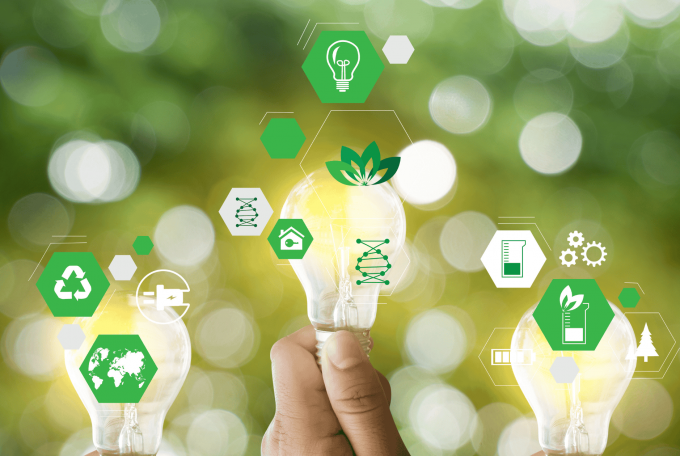Introduction to NLP for Beginners
Natural Language Processing (NLP) is a subfield of Artificial Intelligence (AI) focused on the interaction between computers and human language. It involves teaching machines to understand, interpret, and generate human language in a way that is both meaningful and useful.
Whether you’re a beginner or looking to deepen your understanding, mastering NLP is crucial in today’s world of AI-driven applications, such as chatbots, sentiment analysis, translation systems, and more. In this article, we’ll guide you through the basics of NLP and walk you through building a simple text classification model using TensorFlow and Keras.
What is NLP, and How Does it Work?
NLP is essentially about making sense of text or speech data, helping machines understand context, intent, and sentiment behind human language. It enables computers to process and analyze large amounts of natural language data to perform tasks such as text classification, named entity recognition (NER), sentiment analysis, machine translation, and more.
To perform NLP, we need to use techniques such as:
- Tokenization: Breaking text into smaller units, like words or sentences.
- Vectorization: Converting text into numerical representations, making it digestible for machine learning models.
- Model Training: Applying machine learning algorithms to learn patterns from the data and make predictions.
Text classification, where we categorize text into predefined labels (e.g., sentiment analysis), is one of the most common NLP tasks.
Building a Text Classification Model Using TensorFlow and Keras
In this section, we’ll demonstrate how to build a simple text classification model using TensorFlow and Keras. We’ll classify movie reviews as either positive or negative, based on the text content.
Step 1: Install Necessary Libraries
Before we start, ensure you have the necessary libraries installed. You can install them using pip:
pip install tensorflow numpyStep 2: Preparing the Data
To create a text classification model, you’ll need a dataset of text samples and corresponding labels. For this example, let’s assume we’re using a movie reviews dataset with X_train containing the reviews and y_train containing the binary sentiment labels (1 for positive, 0 for negative).
Step 3: Tokenization
The first step in preparing the text data is tokenization, which converts the text into sequences of integers, each representing a unique word in the vocabulary.
from tensorflow.keras.preprocessing.text import Tokenizer
# Initialize the Tokenizer
tokenizer = Tokenizer(num_words=1000)
tokenizer.fit_on_texts(X_train)
# Convert text to sequences of integers
X_train_seq = tokenizer.texts_to_sequences(X_train)
Here, num_words=1000 ensures that only the top 1000 most frequent words are considered during tokenization. This reduces noise and focuses on the most important words.
Step 4: Building the Model
Next, we’ll build the model using the Sequential API in TensorFlow Keras. We use an Embedding layer to convert the integer-encoded text into dense vectors, and then apply a GlobalAveragePooling1D layer to capture the average of all word embeddings in the sequence. Finally, we add Dense layers for the classification output.
import tensorflow as tf
from tensorflow.keras import layers
# Define the text classification model
model = tf.keras.Sequential([
# Embedding layer to map words to vectors
layers.Embedding(input_dim=1000, output_dim=16),
# Apply Global Average Pooling across sequence dimension
layers.GlobalAveragePooling1D(),
# Fully connected layer with ReLU activation
layers.Dense(16, activation='relu'),
# Output layer with sigmoid activation for binary classification
layers.Dense(1, activation='sigmoid')
])
# Compile the model
model.compile(optimizer='adam', loss='binary_crossentropy', metrics=['accuracy'])
- Embedding Layer: Converts words into 16-dimensional dense vectors.
- GlobalAveragePooling1D: Aggregates the information across all words in the sequence.
- Dense Layer: A fully connected layer that learns complex patterns in the data.
- Sigmoid Activation: Used for binary classification (positive or negative sentiment).
Step 5: Training the Model
Now, we’re ready to train the model using our preprocessed training data (X_train_seq and y_train). We’ll train it for 10 epochs:
model.fit(X_train_seq, y_train, epochs=10)Example: Classifying Movie Reviews as Positive or Negative
Let’s apply our model to classify movie reviews. Imagine we have the following movie review:
"An amazing movie with a fantastic plot and brilliant performances!"The model should classify this as a positive review. Conversely, a negative review might be:
"An absolute waste of time. Terrible plot and bad acting."This review would be classified as negative by the model.
Conclusion
Natural Language Processing (NLP) allows us to teach machines how to understand human language, making it a critical tool in AI-powered applications. In this article, we demonstrated how to build a simple text classification model using TensorFlow and Keras. We walked through data preprocessing with tokenization, building a deep learning model, and training it to classify text as positive or negative.
For NLP beginners, mastering these steps opens up the door to more complex tasks such as named entity recognition, machine translation, and chatbots. The key takeaway is that text classification is a foundational NLP task that helps us make sense of large text datasets using AI.
FAQs
- What is the importance of tokenization in NLP? Tokenization helps break down text into manageable pieces, making it easier for models to understand and process the content.
- How do I improve the accuracy of the text classification model? You can experiment with different architectures, add more layers, try more advanced embeddings (like word2vec or GloVe), or fine-tune hyperparameters.
- Can I use this model for multi-class classification? Yes, you can modify the model to handle more than two classes by changing the final layer to
Dense(n, activation='softmax'), wherenis the number of classes.
Are you eager to dive into the world of Artificial Intelligence? Start your journey by experimenting with popular AI tools available on www.labasservice.com labs. Whether you’re a beginner looking to learn or an organization seeking to harness the power of AI, our platform provides the resources you need to explore and innovate. If you’re interested in tailored AI solutions for your business, our team is here to help. Reach out to us at [email protected], and let’s collaborate to transform your ideas into impactful AI-driven solutions.





